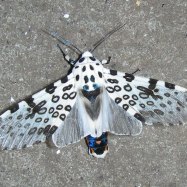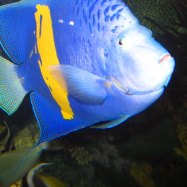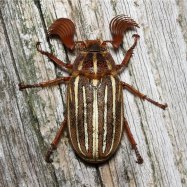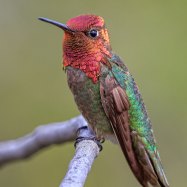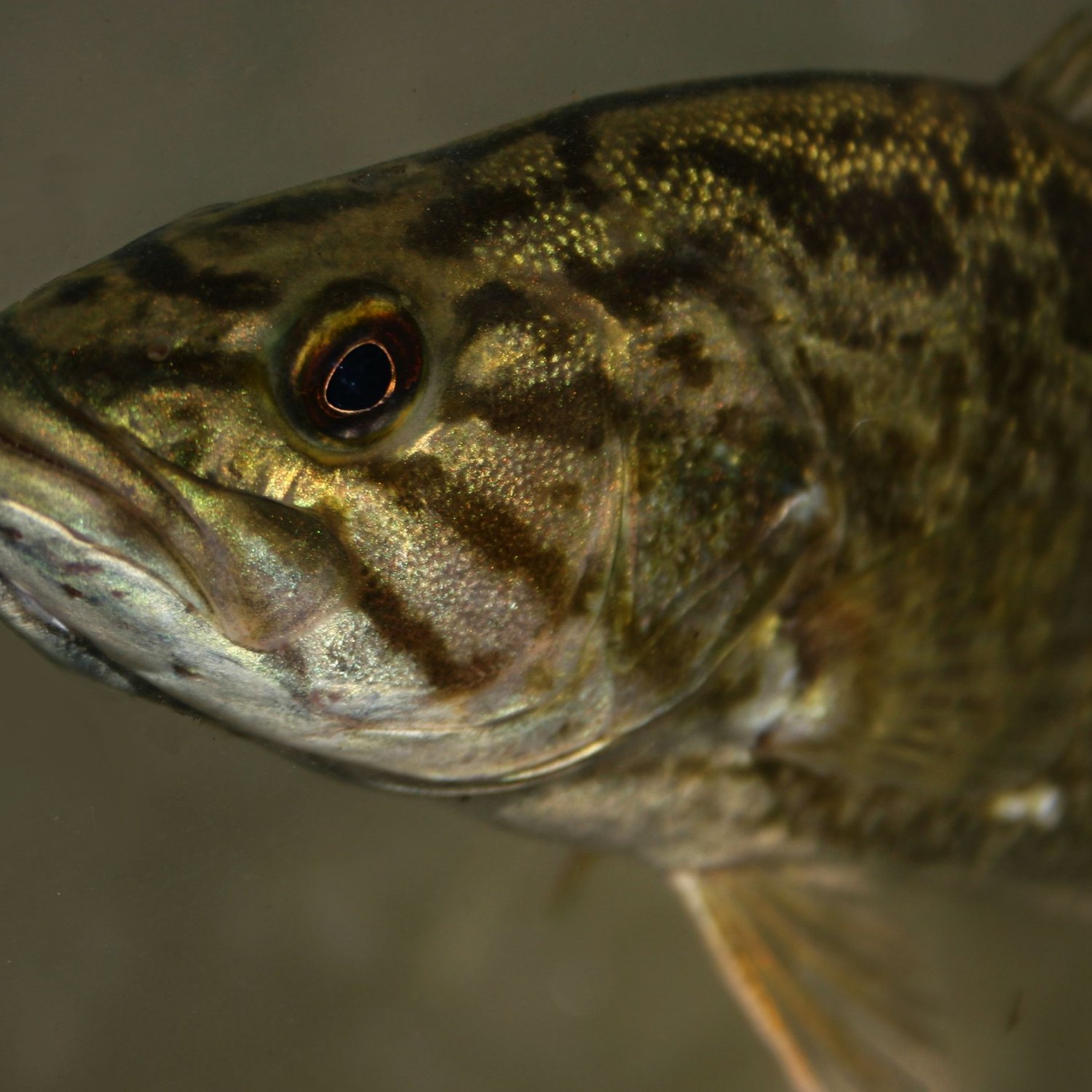
Smallmouth Bass
30-40 cm
The Smallmouth Bass, found in rivers, streams, and lakes, is a popular game fish known for its small but powerful body. Belonging to the Centrarchidae family, this fish has a slender and streamlined body with an average length of 30-40 cm. Anglers love to catch this feisty fish for its fighting spirit and tasty meat. So next time you're near a river or lake, keep an eye out for the Smallmouth Bass.
Animal Details Summary:
Common Name: Smallmouth Bass
Kingdom: Animalia
Habitat: Freshwater
The Fascinating World of Smallmouth Bass
The world of freshwater fish is filled with a diverse range of species, each with their unique characteristics and behaviors. Among them, the smallmouth bass stands out as one of the most intriguing and captivating creatures. With its scientific name Micropterus dolomieu, this small but mighty fish has captured the attention of anglers and nature enthusiasts alike. In this article, we will dive deep into the world of smallmouth bass and unravel some of its fascinating features Smallmouth Bass.The Origins of Smallmouth Bass
Smallmouth bass belong to the Animalia kingdom, Chordata phylum, and Actinopterygii class. Their scientific name, Micropterus dolomieu, is derived from the Greek words "micro" meaning small, "pterus" meaning fins, and "dolomieu" honoring the French mineralogist Déodat Gratet de Dolomieu.This species can be found in North America, where it is native to the United States. Here, it is mainly found in the eastern and central regions, where there is an abundance of freshwater habitats. These fish thrive in a variety of freshwater bodies such as lakes, streams, and rivers, thus making them highly adaptable.
A Carnivorous Diet
The smallmouth bass is a carnivorous predator, meaning that it feeds on other animal species. Their main source of food includes small fish such as minnows, crayfish, and insects like mayflies and damselflies. They are opportunistic feeders and will consume almost any living creature that fits in their mouth.Their feeding method is quite fascinating, where they use their sharp and powerful jaws to strike at their prey Sunbeam Snake. Despite their small size, these fish are swift and agile, making them formidable hunters in the freshwater ecosystem.
Habitat and Distribution
Smallmouth bass are found in various freshwater habitats, with a preference for clear, cool, and shallow waters. Their ideal habitat includes rocky or gravel bottom lakes and fast-moving streams with rocky cover and vegetation. These fish prefer to remain near the bottom of the water body, using their exceptional camouflage to hide among the rocks and vegetation.Their natural distribution is primarily concentrated in North America, where they are commonly found in the United States. However, due to their popularity in sport fishing, smallmouth bass have been introduced in other parts of the world, including Australia, South Africa, and Europe.
Olive to Bronze Coloration
One of the most notable features of the smallmouth bass is its distinctive coloration. This fish is known for its striking olive to bronze hue, making it stand out in freshwater ecosystems. The color can vary slightly depending on the fish's habitat, with those living in clear waters having a brighter and more vibrant color.Additionally, smallmouth bass have dark vertical bars running down their sides, which provides excellent camouflage in their rocky and weedy habitats. This coloration is not only for show but also serves as a protective mechanism against predators.
Slender and Streamlined Body Shape
The smallmouth bass has a long and slender body with a streamlined shape, ideal for swift movements in water. Their body is built for speed and agility, allowing them to catch their prey with ease and escape predators. The fins of these fish are also essential for their movement, with the dorsal fin being the most prominent, providing stability and propulsion.On average, smallmouth bass measure between 30-40 cm in length, making it one of the smallest members of the bass family. While this may not seem significant, these fish pack a powerful punch and can put up quite a fight when caught.
Conservation Efforts for Smallmouth Bass
Due to their popularity in sport fishing, smallmouth bass populations have declined over the years. To preserve their populations and ensure sustainable fishing, there have been several conservation efforts put in place. This includes catch-and-release programs, fishing regulations, and habitat preservation.Furthermore, several studies have been conducted to understand the behavior and ecology of smallmouth bass, which has led to better conservation strategies. These efforts have significantly boosted the population of smallmouth bass, and they continue to thrive in their natural habitats.
In Conclusion
The smallmouth bass may be small in size, but it is a mighty predator that plays a vital role in the freshwater ecosystem. With its unique coloration, streamlined body, and sharp hunting abilities, this fish has captured the hearts of nature enthusiasts and sport fishermen alike. While they may face challenges in terms of conservation, efforts are being made to preserve their populations, ensuring that future generations can continue to enjoy the beauty of the smallmouth bass.

Smallmouth Bass
Animal Details Smallmouth Bass - Scientific Name: Micropterus dolomieu
- Category: Animals S
- Scientific Name: Micropterus dolomieu
- Common Name: Smallmouth Bass
- Kingdom: Animalia
- Phylum: Chordata
- Class: Actinopterygii
- Order: Perciformes
- Family: Centrarchidae
- Habitat: Freshwater
- Feeding Method: Carnivorous
- Geographical Distribution: North America
- Country of Origin: United States
- Location: Rivers, streams, and lakes
- Animal Coloration: Olive to bronze with dark vertical bars
- Body Shape: Slender and streamlined
- Length: 30-40 cm
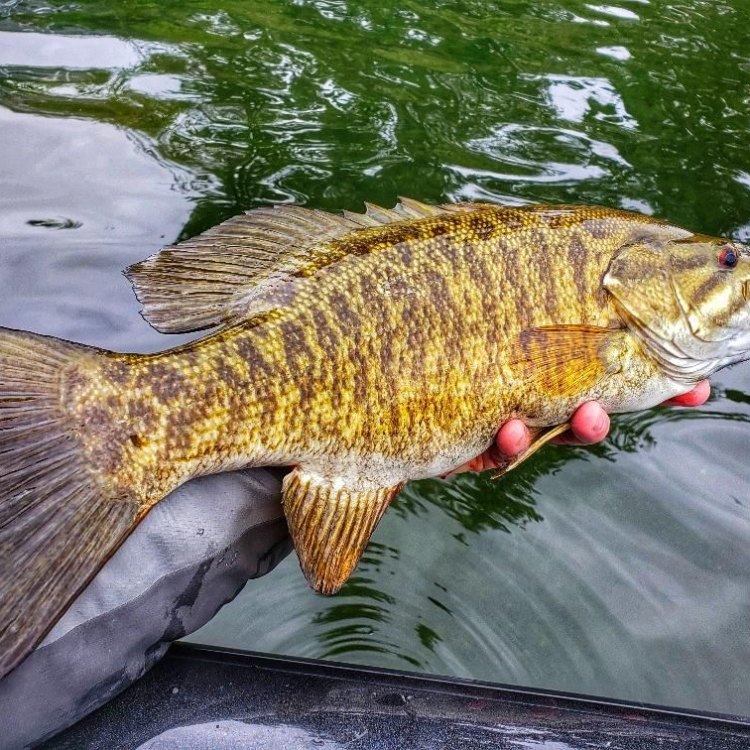
Smallmouth Bass
- Adult Size: 30-50 cm
- Average Lifespan: 10-20 years
- Reproduction: Sexual
- Reproductive Behavior: Spawning in spring
- Sound or Call: Produces various sounds
- Migration Pattern: Migratory in some populations
- Social Groups: Solitary
- Behavior: Aggressive when feeding
- Threats: Habitat loss, pollution, overfishing
- Conservation Status: Least Concern
- Impact on Ecosystem: Ecologically important as a top predator
- Human Use: Sport fishing
- Distinctive Features: Red eyes, smallmouth, and elongated body
- Interesting Facts: Can jump out of the water when hooked
- Predator: Larger fish, birds of prey
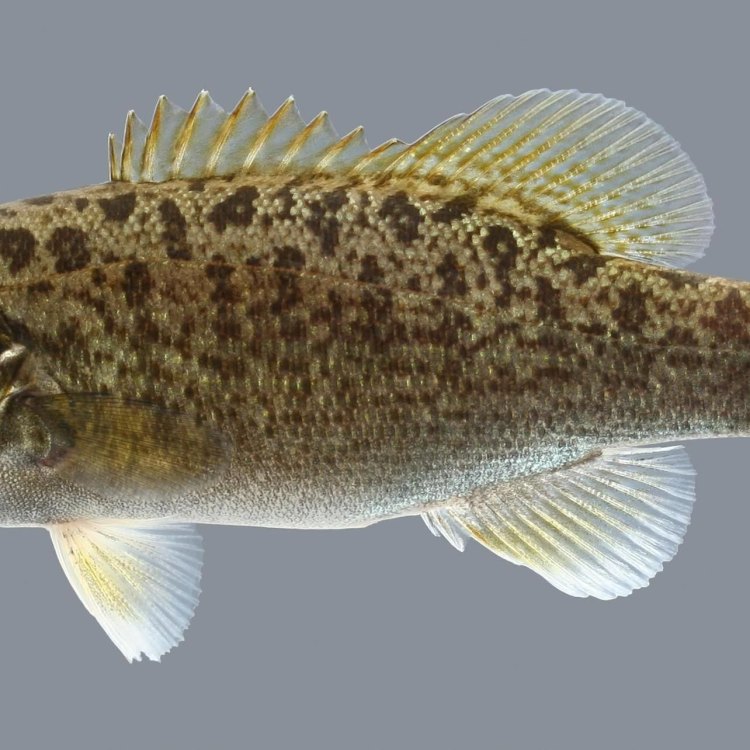
Micropterus dolomieu
The Mighty Smallmouth Bass: A Top Predator of the Aquatic World
The world's oceans, rivers, and lakes are teeming with diverse aquatic life, and among them is a fish that has been captivating anglers for centuries: the smallmouth bass. This iconic fish, known for its agility and tenacity, has a variety of unique features and behaviors that make it stand out in the underwater world.Scientifically known as Micropterus dolomieu, the smallmouth bass is a freshwater fish native to North America. It is a member of the sunfish family, which also includes popular game fish like the largemouth bass and the bluegill PeaceOfAnimals.Com. But what makes this fish so special and sought after by anglers? Let's dive deeper into the world of the smallmouth bass and explore its distinct characteristics.
The Physical Attributes of a Smallmouth Bass
One of the most notable aspects of the smallmouth bass is its distinctive appearance. It is a medium-sized fish, with an average adult size of 30-50 cm (12-20 inches) and a weight ranging from 0.5-3 kg (1-6 pounds). However, there have been reports of some individuals reaching up to 8 kg (18 pounds), making them a prize catch for any angler. These fish can live up to 10-20 years, depending on factors such as water quality and food availability.The most striking feature of the smallmouth bass is its red eyes, which give it a fierce and intense look. Its name, "smallmouth," comes from its characteristic small mouth. However, what sets it apart from other bass species is its elongated, torpedo-shaped body, which allows it to be swift and agile in the water, making it a challenging catch Salmon.
Reproduction and Behavior
Like most animals, the smallmouth bass reproduces sexually. It reaches sexual maturity at the age of three or four. Typically, the reproductive behavior of smallmouth bass occurs in the spring, around late April to early June, and is triggered by an increase in water temperature. During this time, the fish will travel to shallow, clear waters to spawn, with males building nests to attract females.Interestingly, smallmouth bass also produce various sounds during their reproductive period. They have a unique organ called a gas bladder, which acts as a drum and amplifies their sound production. These vocalizations help in spawning and establishing hierarchical positions within their social groups.
Migratory Patterns and Social Groups
Smallmouth bass are solitary creatures, and they typically do not form social groups. However, in some populations, especially in the Great Lakes region, there is evidence of migration during their reproductive period. These fish will travel long distances (sometimes up to 200 km or 124 miles) to spawn in rivers and streams, making them a migratory species in these regions.During spawning, the male smallmouth bass will aggressively protect their nesting site, chasing away any intruders, including other males. However, after the reproductive period, these fish will typically return to their solitary behavior.
Aggressive Feeders and Ecological Importance
Smallmouth bass are opportunistic, aggressive feeders, preying on a variety of aquatic creatures, including minnows, crayfish, worms, and insects. They have sharp teeth and a powerful jaw, allowing them to quickly swallow their prey whole. This aggressive behavior is also evident in their feeding habits, as they will attack larger fish and even birds that come too close to the water's surface.As top predators, smallmouth bass play an essential role in the ecosystem, helping to control the population of their prey and maintaining the balance of the aquatic food chain. Additionally, their foraging behavior helps to stir up sediment, improving the health of aquatic plants and organisms.
Threats and Conservation Status
Unfortunately, like many other species, smallmouth bass face several threats in their natural habitat. These include habitat loss due to human activities, pollution from agricultural and industrial run-off, and overfishing. The introduction of non-native species, such as the invasive round goby, has also affected the smallmouth bass's population in some regions.Despite these threats, smallmouth bass have a conservation status of "Least Concern," according to the IUCN Red List. This is due to their widespread distribution and large population. However, efforts to preserve their habitat and sustainable fishing practices should continue to ensure their survival.
Human Use and Interesting Facts
Smallmouth bass have long been a popular sport fish, with anglers targeting them for their aggressive nature and challenging fight. Many fishing tournaments and records have been set by catching this elusive fish. They are also a favorite among fly fishermen, who enjoy using various techniques and lures to entice them.One of the most interesting facts about smallmouth bass is their ability to jump out of the water when hooked by an angler. This behavior, commonly known as "flipping," adds to the thrill and challenge of catching them.
Natural Predators and Defense Mechanisms
As a top predator, smallmouth bass are not preyed upon by many other species. However, larger fish, such as pike and muskellunge, can pose a threat to smaller individuals. Additionally, birds of prey, such as ospreys and herons, may also feed on smallmouth bass. These fish have evolved several defense mechanisms, such as camouflage, fast swimming, and sharp spines on their dorsal fins, to protect themselves from predators.In Conclusion
In the world of aquatic creatures, the smallmouth bass stands out for its unique features and behaviors. With its distinctive red eyes, elongated body, and aggressive nature, this fish has captured the attention of anglers and researchers alike. However, as with many species, it faces threats to its survival and requires conservation efforts to ensure its continued existence. As we continue to explore the wonders of the underwater world, we must also work towards preserving its diverse inhabitants, including the mighty smallmouth bass.
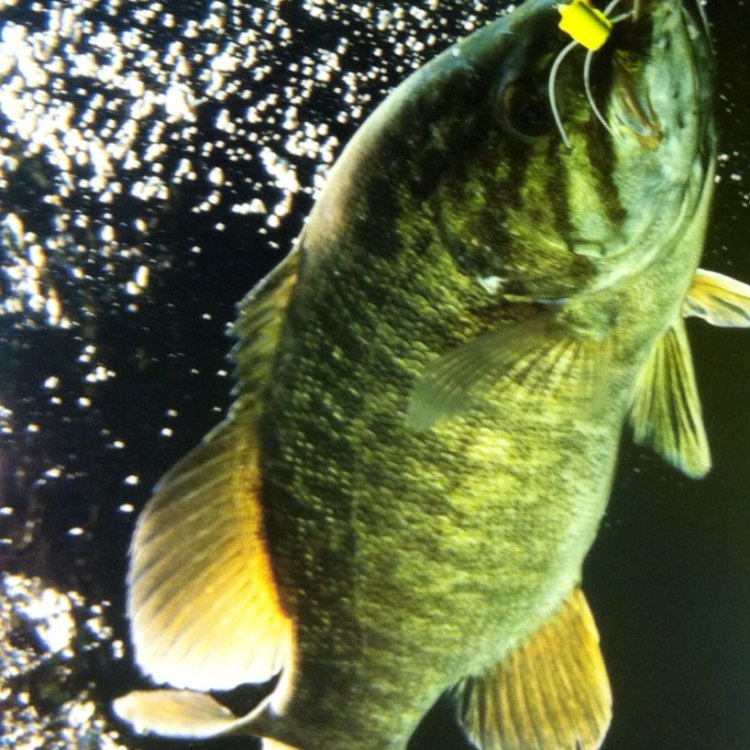
The Fascinating World of Smallmouth Bass
Disclaimer: The content provided is for informational purposes only. We cannot guarantee the accuracy of the information on this page 100%. All information provided here may change without prior notice.



